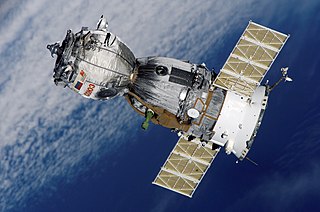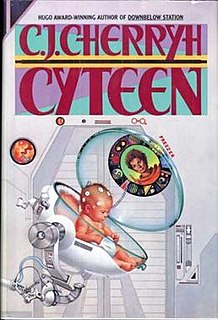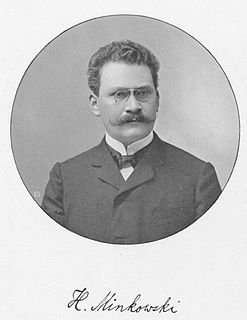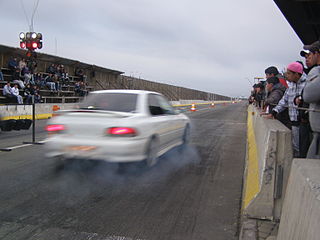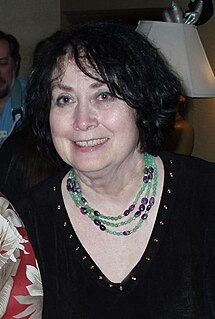
Carolyn Janice Cherry, better known by the pen name C. J. Cherryh, is an American writer of speculative fiction. She has written more than 80 books since the mid-1970s, including the Hugo Award-winning novels Downbelow Station (1981) and Cyteen (1988), both set in her Alliance-Union universe. She is known for "world building," depicting fictional realms with great realism supported by vast research in history, language, psychology, and archeology. Her series of fantasy novels set in the Alliance-Union universe, the Morgaine Stories, have sold in excess of 3 million copies.

The Chanur novels is a series of five science fiction novels, forming three separate stories, written by American author C. J. Cherryh and published by DAW Books between 1981 and 1992. The first novel in the series is The Pride of Chanur (1981), which was nominated for both the Hugo and Locus Awards in 1983. The Pride of Chanur, originally a stand-alone story, was followed by the Chanur's Venture trilogy, Chanur's Venture (1984), which was shortlisted for a Locus Award in 1985; The Kif Strike Back (1985) and Chanur's Homecoming (1986). These were followed by a later sequel, Chanur's Legacy (1992). The five novels were also published in two omnibus editions: the first three in The Chanur Saga in 2000 and the next two in Chanur's Endgame in 2007.
Hyperdrive is a name given to certain methods of traveling faster-than-light (FTL) in science fiction. Related concepts are jump drive and warp drive.
A jump drive is a speculative method of traveling faster than light (FTL) in science fiction. Related superluminal concepts are hyperdrive, warp drive and interstellar teleporter. The key characteristic of a jump drive is that it allows a starship to be instantaneously teleported between two points. A jump drive is supposed to make a spaceship go from one point in space to another point, which may be several light years away, in a single instant. Like time travel, a jump drive is often taken for granted in science fiction, but very few science fiction works talk about the mechanics behind a jump drive. There are vague indications of the involvement of tachyons and the space-time continuum in some works.
Hyperspace is a superluminal method of traveling used in science fiction. It is typically described as an alternative "sub-region" of space co-existing with our own universe which may be entered using an energy field or other device. As seen in most fiction hyperspace is most succinctly described as a "somewhere else" within which the laws of general and special relativity decidedly do not apply – especially with respect to the speed of light being the cosmic speed limit. Entering and exiting said "elsewhere" thus directly enables travel near or faster than the speed of light – almost universally with the aid of extremely advanced technology. "Through hyper-space, that unimagineable region that was neither space nor time, matter nor energy, something nor nothing, one could traverse the length of the Galaxy in the interval between two neighboring instants of time."
The Alliance–Union universe is a fictional universe created by American writer C. J. Cherryh. It is the setting for a future history series extending from the 21st century out into the far future.

American writer C. J. Cherryh's career began with publication of her first books in 1976, Gate of Ivrel and Brothers of Earth. She has been a prolific science fiction and fantasy author since then, publishing over 80 novels, short-story compilations, with continuing production as her blog attests. Ms. Cherryh has received the Hugo and Locus Awards for some of her novels.

Alternate Realities is a 2000 omnibus collection of three short science fiction novels by American writer author C. J. Cherryh: Wave Without a Shore (1981), Port Eternity (1982), and Voyager in Night (1984). All three novels are set in Cherryh's Alliance-Union universe and share a common theme of people encountering and coping with a reality different from their own.

Forty Thousand in Gehenna, alternately 40,000 in Gehenna, is a 1983 science fiction novel by American writer C. J. Cherryh. It is set in her Alliance-Union universe between 2354 and 2658, and is one of the few works in that universe to portray the Union side; other exceptions include Cyteen (1988) and Regenesis (2009).
Azi are a fictional type of human clones invented by science fiction and fantasy author C. J. Cherryh. They appear in various books in her Alliance-Union universe. "Azi" is an acronym for "artificial zygote insemination". The subject is treated at length in Cherryh's 1989 novel Cyteen and its 2009 sequel, Regenesis.
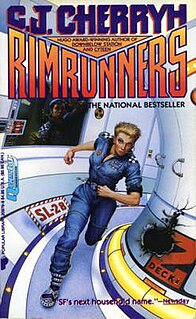
Rimrunners is a science fiction novel by American writer C. J. Cherryh, set in her Alliance-Union universe, in which humanity has split into three major power blocs: Union, the Merchanter's Alliance and Earth. Chronologically, the book follows immediately after the author's Downbelow Station and is one of Cherryh's series of "Merchanter" novels.

Merchanter's Luck is a science fiction novel by American writer C. J. Cherryh. It is set in the author's Alliance-Union universe, in which humanity has split into three major power blocs: Union, the Merchanter's Alliance and Earth. In the context of the Alliance-Union universe, the book is one of Cherryh's Merchanter novels.

Tripoint is a science fiction novel by the United States science fiction and fantasy author C. J. Cherryh, first published by Warner Books in September 1994. It is one of Cherryh's Merchanter novels and is set in the author's Alliance-Union universe.
Several themes recur throughout the works of American science fiction and fantasy author C. J. Cherryh.

Regenesis (2009) is a science fiction novel by American writer C. J. Cherryh, set in her Alliance-Union universe. It is a sequel to Cherryh's Cyteen, and was published in hardcover by DAW Books in January 2009. The teenage clone of a top scientist and political leader unravels the decades-old murder of her "genemother", while also dealing with threats to her own welfare.
Interstellar travel is a common feature of fiction such as science fiction and fantasy.
